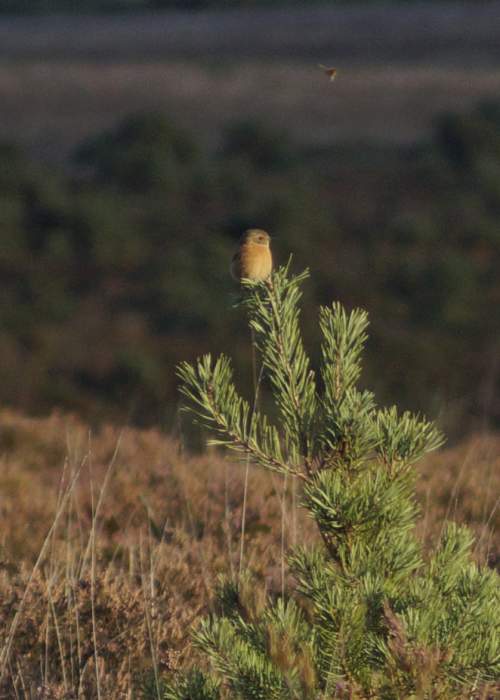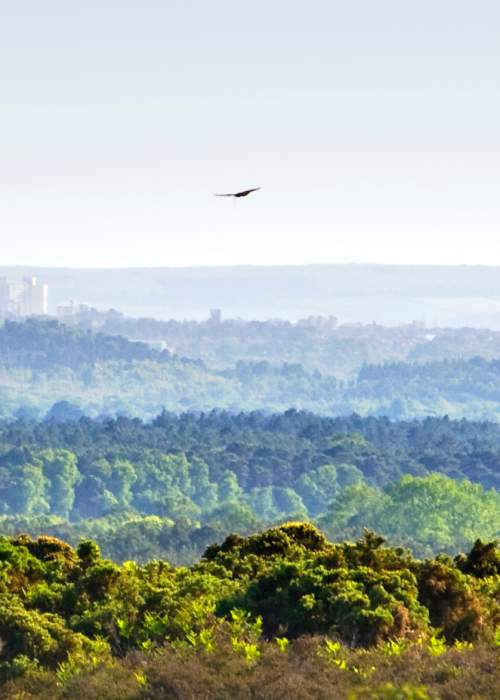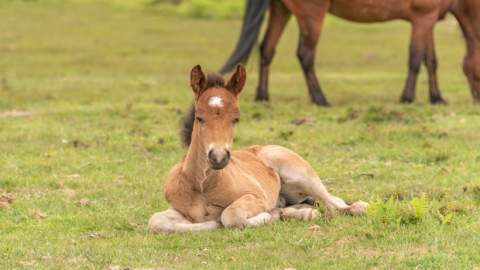New Forest Birds
The New Forest is a rich habitat for a range of different wildlife; its diverse landscapes make it the ideal location for various types of woodland animals, large mammals and birds. Birds are commonly an overlooked feature of the New Forest ecosystem and the Forest plays an integral role in some of these birds’ existence.
There are a variety of places throughout The New Forest which are perfect for visitors to indulge in a spot of bird watching. The best places you can see birds are in the heathlands, nature reserves and woodlands. Our diverse landscapes makes it the perfect place to see an array of different birds from buzzards to kingfishers.
There are around 100 species of breeding birds in The New Forest, with around 20 regular avian visitors which arrive or pass through the forest in the winter months.
Our heathlands
The heathlands are a dry, warm and insect-rich habitat which makes it the perfect breeding and nesting ground for an array of different birds. You will often find that during March and July which is the nesting season, visitors are asked to keep themselves and their dogs on the designated walking paths in order to ensure the safety of the ground nesting birds.
Nightjar, Woodlark, Hobby, the Dartford Warbler and Stonechat are just some of the heathland birds you might spot here. Birds of prey often patrol the heathland with Hen Harrier and Merlin amongst the species searching for mammal or small bird prey.
Our woodlands
Our woodlands are ideal hiding places for many of our bird species. Birds such as Woodpecker will often nest in the cracks and holes found in the trees. Stay quiet and you may just hear one drumming on one of the trees in search of food.
Keep your eyes open for Tree Creepers and Nuthatches climbing up and down the tree trunks whilst exploring our woodlands.
Our coastline, wetlands and bogs
The coastline provides with it ample opportunities for bird watching. A popular place for birdwatching is at Lymington and Keyhaven Marshes Nature Reserve, where wetland birds frequent. Large numbers of Brent Geese seek refuge here in the winter, along with roosting Dunlin, Black-Tailed Godwit and Grey Plover.
Lapwing and Curlew frequent the wetlands and boggy areas, both of which are ground-nesting species. Hobbys can be spotted above the bogs in search of large insect prey.
Where can I learn more about birds in the New Forest?
Look out for nature walks that take place at various locations around the area by keeping an eye on our what’s on pages. The Hampshire and Isle of Wight Wildlife Trust run many different events at their Blashford Lakes nature reserve.
Book onto a guided walk of the New Forest - friendly local experts will be on hand to show you some of the best places for wildlife spotting around the National Park.
A fantastic place to learn more about owls is New Forest Wildlife Park, where you can listen to one of the Keeper Talks about the variety of owls they look after, many of which are native to the UK. Liberty’s Raptor and Reptile Centre is also another great family day out where there are daily Raptor displays.
The various nature reserves found within the New Forest often offer interpretation boards giving you more information on what you can look out for.
Top places in the New Forest for bird watching
Below are some of the popular places for a spot of birdwatching. We’d recommend checking facilities and particular species occurrence before visiting:
-
Lymington and Keyhaven Marshes nature reserve
-
Acres Down, near Minstead
-
Beaulieu Heath, near Beaulieu Road Station
-
Blashford Lakes nature reserve, near Ringwood
-
Roydon Woods nature reserve, near Brockenhurst
Ways you can help New Forest birds
The New Forest National Park is a wonderful place to visit and you can help it stay that way by being a Forest friendly visitor and following the New Forest Code.
To help ground-nesting birds rear their young safely, keep yourself, dogs and horses on the main tracks from the beginning of March to the end of July. Take a look at this video, narrated by naturalist, Chris Packham on not only some of the ground-nesting birds to look out for but ways we can help them https://www.youtube.com/watch?time_continue=315&v=t1kaG0Lak6E.
Ground Nesting Birds in the New Forest
From late February, when the breeding season begins, until the end of August, everyone spending time in the Forest can play a crucial role in protecting these vulnerable birds by sticking to the designated tracks and ensuring dogs remain with them on these paths.
Stay on track to help New Forest wildlife this spring
Orange signs indicate areas that are very close to breeding grounds and can be spotted in locations such as car parks and along the main tracks. Red "stop" signs warn of nesting zones in the immediate area and request that people steer clear to prevent disturbance.
People are asked to stay on the main gravel tracks and avoid venturing onto open heathlands where nesting takes place. Dog walkers can assist by keeping their dogs alongside them on the paths and, where necessary, using leads to ensure they remain under control.
What species of birds are ground nesting?
Woodlarks are small birds with a streaky brown plumage recognised by their melodic song, distinctive white stripes over each eye, and spikey head crest. The nest on the ground within heathlands and woodland clearings where trees have been recently felled.
The New Forest provides an essential breeding habitat for woodlarks and other rare ground-nesting species, such as lapwings, Dartford warblers, curlews, and nightjars. These birds are under pressure across the UK due to habitat destruction and human disturbance, with some species experiencing dangerously low population numbers. Supporting their successful breeding is vital for their survival.
Unlike most birds, ground nesting species build nests and raise their young on the ground at the edges of woodlands and on open heathland areas. Because of this, it is particularly important to avoid disturbing them, as startled parents may flee their nests, leaving eggs and chicks vulnerable to predators.
Car parks closed near nesting sites
A small number of car parks will be closed during the breeding season. These car parks are: Clayhill, Crockford, Crockford Clump, Hincheslea, Hincheslea Moor, Ocknell Pond, Ogdens, Shatterford, Yew Tree Heath and part of Beaulieu Heath car park.
Expert advice and knowledge
Leanne Sargeant, Senior Ecologist for Forestry England, said:
“Many birds rely on lowland heaths to breed yet this type of habitat is now rarer than rainforest. The New Forest has some of the most extensive heathlands left in Europe and we are restoring and managing these to provide as much of this critically important habitat as possible. We have more to do, but it’s really rewarding to start to see species like woodlark returning and in such high numbers. Typically, these are one of the first species to return to restored areas and a good indication that the habitat is the right one.”
“We are really grateful to all of the incredibly dedicated local volunteers who have spent many hours patiently watching and listening for these special birds.”
Nigel Matthews, Lead Co-ordinator of the survey for Hampshire Ornithological Society said:
“Anyone spending time in the New Forest will know that it is a special spot for birds and a great place to hear and see many different species. Luckily our volunteers enjoy doing this too! They have spent hundreds of hours listening for woodlark calls and songs, watching them feed and tracking their movements. All of these observations have allowed us to create a full picture of the fortunes of these special birds and it’s really encouraging to know their numbers are so high.”




